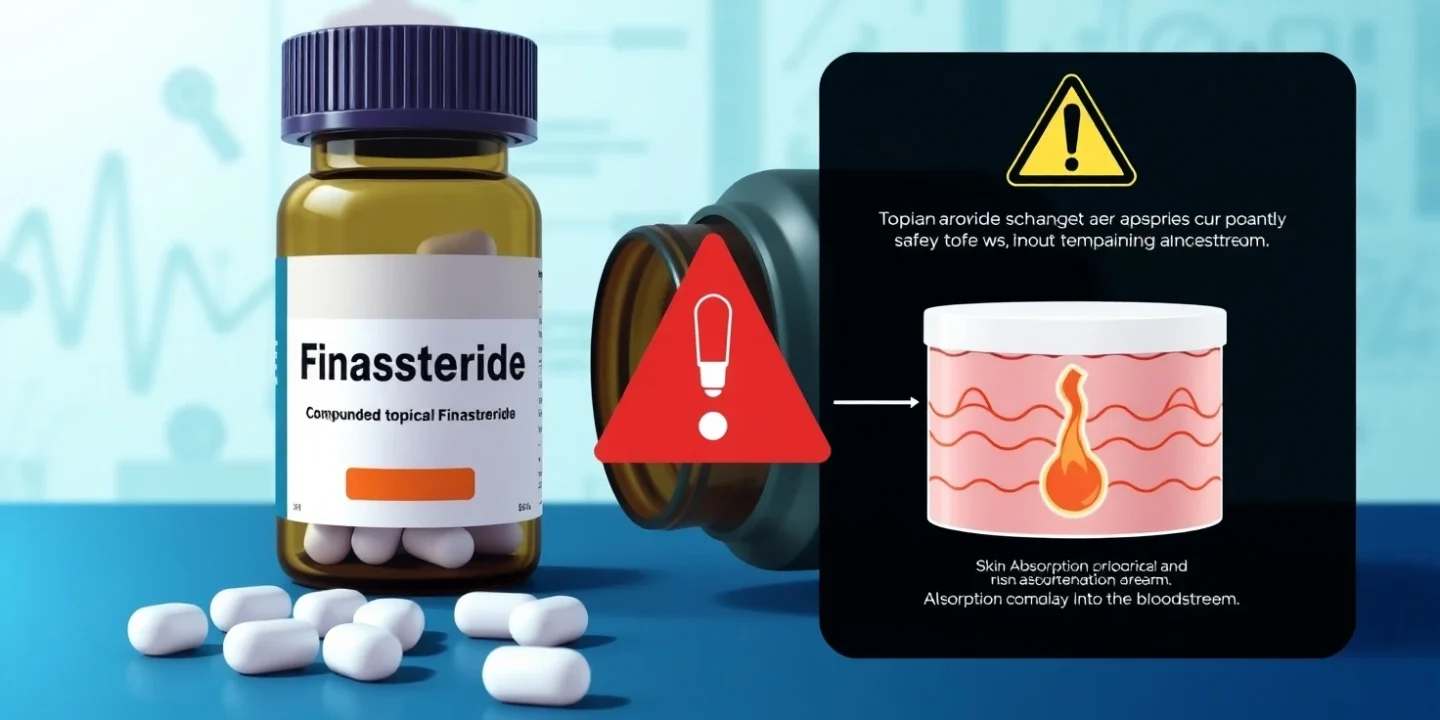
Finasteride is commonly used to treat male pattern baldness, available in oral form through two FDA-approved products: Proscar and Propecia. However, compounded topical finasteride is increasingly marketed as an alternative for hair loss treatment. Unlike the oral forms, compounded topical finasteride does not have FDA approval or safety testing, making it essential to understand the compounded topical finasteride risks associated with its use.
What Makes Compounded Topical Finasteride Risky?
The use of compounded topical finasteride comes with significant concerns. Although marketed as a safer option compared to oral finasteride, compounded topical finasteride carries many of the same risks. The compounded topical finasteride risks include:
- Erectile dysfunction
- Decreased libido
- Anxiety and depression
- Suicidal ideation
- Testicular pain
- Fatigue
These adverse effects mirror those of the oral finasteride versions but are linked to topical applications. With no FDA-approved labeling, compounded topical finasteride is unregulated, increasing potential safety hazards.
One of the main concerns around compounded topical finasteride risks is the absorption of finasteride through the skin. Even though the medication is applied topically, it can still enter the bloodstream, causing systemic effects similar to oral finasteride. Additionally, users of topical finasteride face the danger of local reactions like skin irritation, redness, and burning sensations.
The Danger of Accidental Exposure
Another significant concern involves accidental exposure, particularly to women. Unlike oral finasteride, which has a protective coating, topical formulations lack such safety measures. This increases the risk of inadvertent exposure to others, including pregnant women, potentially causing harm to a male fetus.
Lack of Awareness Among Consumers
A concerning aspect of compounded topical finasteride risks is the lack of awareness among consumers. Many patients who use compounded finasteride are unaware of the potential side effects. This includes reports of patients being told by their healthcare providers that there would be no significant risk with topical treatments. However, users have reported serious symptoms that persisted after stopping the product, highlighting the need for better education about the compounded topical finasteride risks.
The Role of Healthcare Providers in Educating Patients
The FDA strongly recommends that healthcare providers educate their patients about the compounded topical finasteride risks before prescribing or recommending compounded topical finasteride. Healthcare providers should emphasize that these products are not FDA-approved, which means they have not undergone the rigorous testing required to ensure their safety or efficacy. Patients should be fully informed about the potential for skin absorption, local reactions, and the possibility of transferring the medication to others.
Providers must also warn patients about the dangers posed to pregnant women due to the lack of protective coatings on topical finasteride products. The FDA advises against using compounded topical finasteride, particularly for individuals who might be exposed to it inadvertently.
Risks to Pregnant Women
Pregnant women are at heightened risk due to the potential for compounded topical finasteride to adversely affect a male fetus. The compounded topical finasteride risks are exacerbated because there is no protective coating, unlike oral tablets. As a result, accidental exposure to the drug through skin contact could lead to birth defects, particularly for male babies.
Studies have shown that even handling crushed or broken oral finasteride tablets can be dangerous for pregnant women. Topical formulations, with their potential for unprotected skin absorption, further increase this risk.
Conclusion: Stay Informed About Compounded Topical Finasteride Risks

In conclusion, compounded topical finasteride risks should not be overlooked. Compounded topical finasteride is not FDA-approved, and as such, the FDA has not evaluated its safety, effectiveness, or quality. As the FDA warns, consumers and healthcare providers must exercise caution when considering compounded topical finasteride for hair loss treatment.
Consumers must consult healthcare providers to understand the potential compounded topical finasteride risks fully. Healthcare providers should inform patients about the side effects, absorption risks, and dangers to others, particularly women. By staying informed, consumers can make safer choices regarding the use of compounded topical finasteride.







